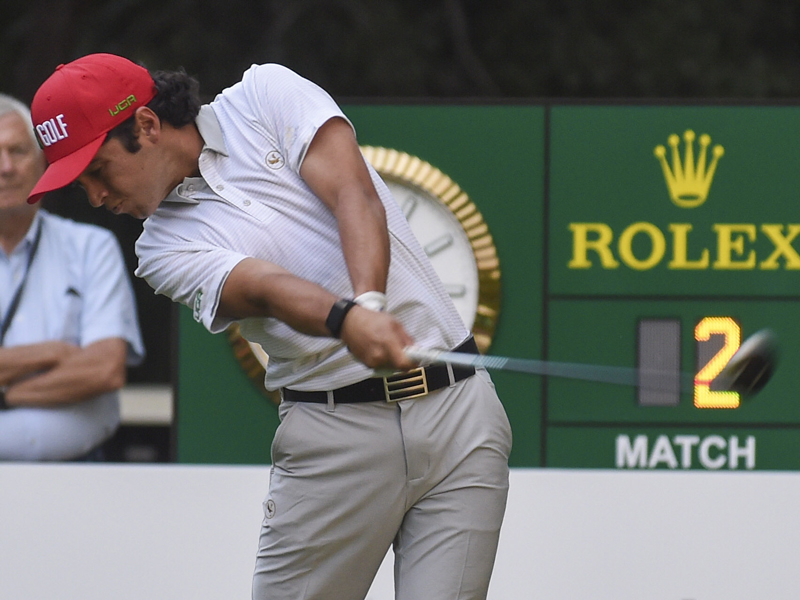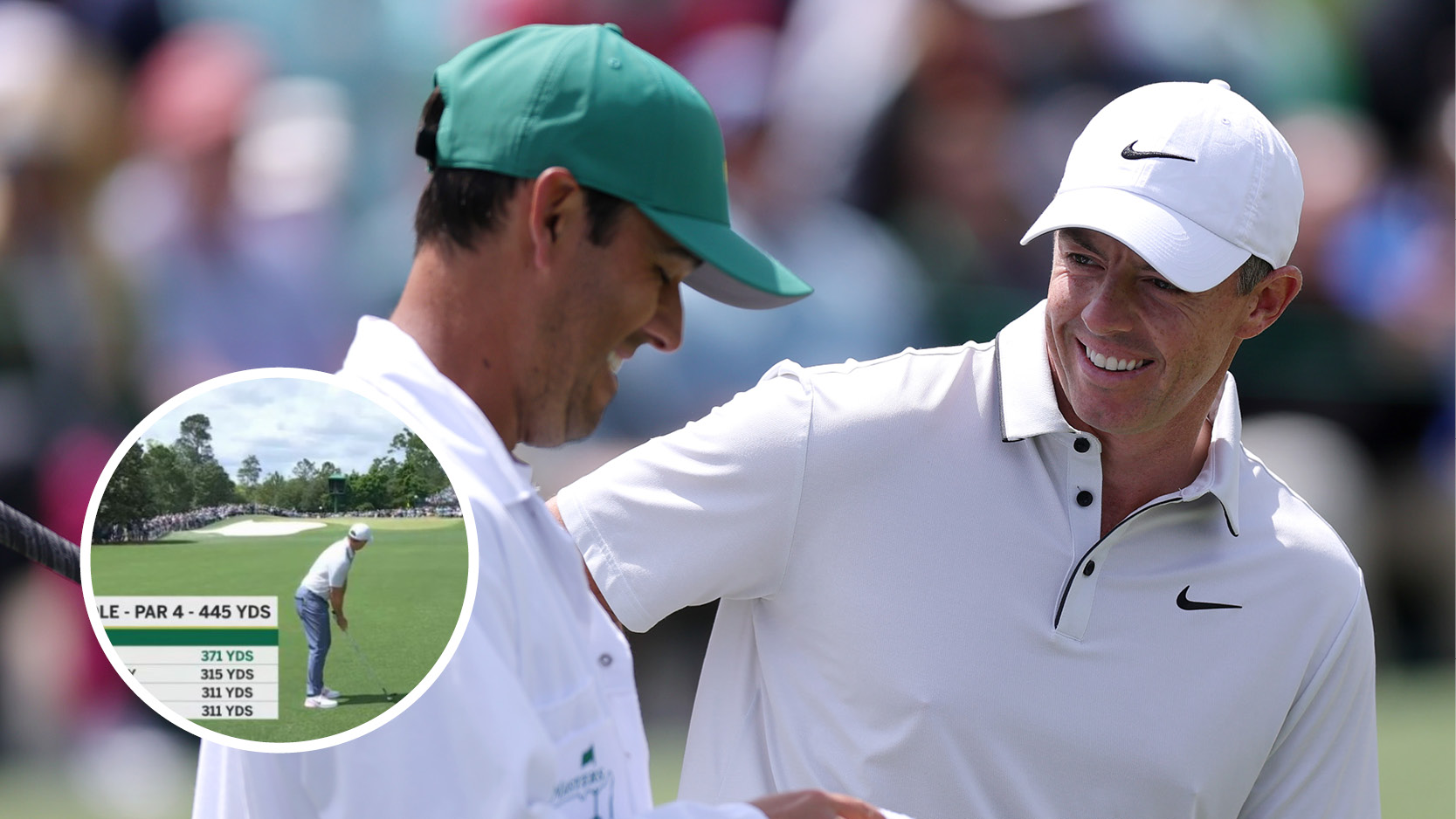Fergus Bisset LAAC Friday: Distance learning
Watching the youngsters in Mexico, Fergus considers the distance debate


The dynamic power of the young players at the LAAC has made Fergus think further on the, much reported and discussed, distance debate.
Fergus Bisset LAAC Friday: Distance learning
Over a very nice dinner last night at the Banyan Tree’s excellent Thai restaurant Saffron, discussion turned to the distance modern elite players hit the ball.
Inevitably a few names were mentioned when covering those who are vocal in their criticism of equipment advances and those who would advocate heightened regulations.
I don’t need to name those names here as any golf fan will have heard the arguments trotted out every time someone drives a par-4 or reaches a 600 yarder in two.
I’ve written quite a bit on this subject over the years and my opinion is as follows:
Equipment advances throughout the history of golf have facilitated steps forward in the level of play.
Get the Golf Monthly Newsletter
Subscribe to the Golf Monthly newsletter to stay up to date with all the latest tour news, equipment news, reviews, head-to-heads and buyer’s guides from our team of experienced experts.
The move to the gutta-percha ball then the move to a rubber ball both meant greater distances could be achieved and, despite grumblings from the old guard, the changes pushed golf forward as a sport.
When the first steel shafts came in, they allowed players like Byron Nelson to fundamentally change their technique to produce a wider and more powerful swing.
"Iron Byron" is now viewed as a trailblazer with regards golfing technique.
Without these advancements, golfers would still be clicking wooden balls around a field with sticks and I don’t think that would generate much interest.
The regulations on equipment have not changed in recent years but manufacturers have continued to innovate to maximise performance from their products within legal parameters.
Meanwhile, players have come steadily closer to perfecting the techniques required to maximise what they can get out of that equipment.
The objective in golf is to shoot as low a score as possible and, as with any human endeavour, participants will continuously look for ways to accomplish their task more effectively.
Why would we take steps to prevent this objective?
Watching the young players at the LAAC bombing drivers and striping irons made me think about that.
It’s so patently clear that it’s their technique and athleticism that allows them to hit the ball so far.
OK, the equipment has facilitated this (as per the move to steel shafts or metal woods,) but it only functions properly in the hands of those who know how to use it.
The average punter can’t hit the ball any further than they could 15 years ago.
Almost all of the top players here in Mayakoba this week take, fundamentally, the same approach and it’s the same as that seen on the main professional tours each week.
They have a wide, athletic stance from which they make a complete, coiling turn allowing them to release at full speed, turning their entire bodies through the ball, generating maximum power.
Watch the modern swing and take the clubs and balls out of the equation and what you can say, without question, is that golfing technique has evolved and moved forward.
Much as it did when Byron Nelson got to grips with the steel shaft.
Much as it did when improved greens allowed for a more fluid, less wristy putting stroke.
Golf has progressed as a sport and so it should; all sports do.
Look at the way modern football is played compared to the punting and hacking of 50 years ago.
Or the way tennis players strike the ball and cover the court now against the relative “pat-a-cake” of the 1960s.
The modern golfer is physically fit with fast twitch muscles – Their action is dynamic and powerful and it, not their equipment, generates tremendous speed at impact.
The technique of the modern golfer may look strange to those who grew up with the small ball but it’s where golf has evolved to at this point.
As those best at this sport continue to seek ways to get the ball into the hole in fewer shots, new techniques (within the rules and regulations) will continue to appear and develop.
Limits on distance won’t and shouldn’t come from tightened rules on equipment, they will and should be governed by the limitations of the human body.
As long as players can continue to get stronger, swing wider and faster, they will continue to hit the golf ball further.

Fergus is Golf Monthly's resident expert on the history of the game and has written extensively on that subject. He has also worked with Golf Monthly to produce a podcast series. Called 18 Majors: The Golf History Show it offers new and in-depth perspectives on some of the most important moments in golf's long history. You can find all the details about it here.
He is a golf obsessive and 1-handicapper. Growing up in the North East of Scotland, golf runs through his veins and his passion for the sport was bolstered during his time at St Andrews university studying history. He went on to earn a post graduate diploma from the London School of Journalism. Fergus has worked for Golf Monthly since 2004 and has written two books on the game; "Great Golf Debates" together with Jezz Ellwood of Golf Monthly and the history section of "The Ultimate Golf Book" together with Neil Tappin , also of Golf Monthly.
Fergus once shanked a ball from just over Granny Clark's Wynd on the 18th of the Old Course that struck the St Andrews Golf Club and rebounded into the Valley of Sin, from where he saved par. Who says there's no golfing god?
-
 Rory McIlroy Fires Back-To-Back 370-Yard Monster Drives In Birdie-Eagle-Birdie Start To Lead The Masters
Rory McIlroy Fires Back-To-Back 370-Yard Monster Drives In Birdie-Eagle-Birdie Start To Lead The MastersIt's safe to say that the four-time Major winner was full of adrenaline at the start of his third round, with McIlroy pounding two drives that measured a total of 740-yards
By Matt Cradock Published
-
 Who Is On Bryson DeChambeau’s Team? Coach, Caddie, Manager And More
Who Is On Bryson DeChambeau’s Team? Coach, Caddie, Manager And MoreBryson DeChambeau is one of the most high-profile and successful players of his era, but who are the team members helping to guide his career?
By Mike Hall Published